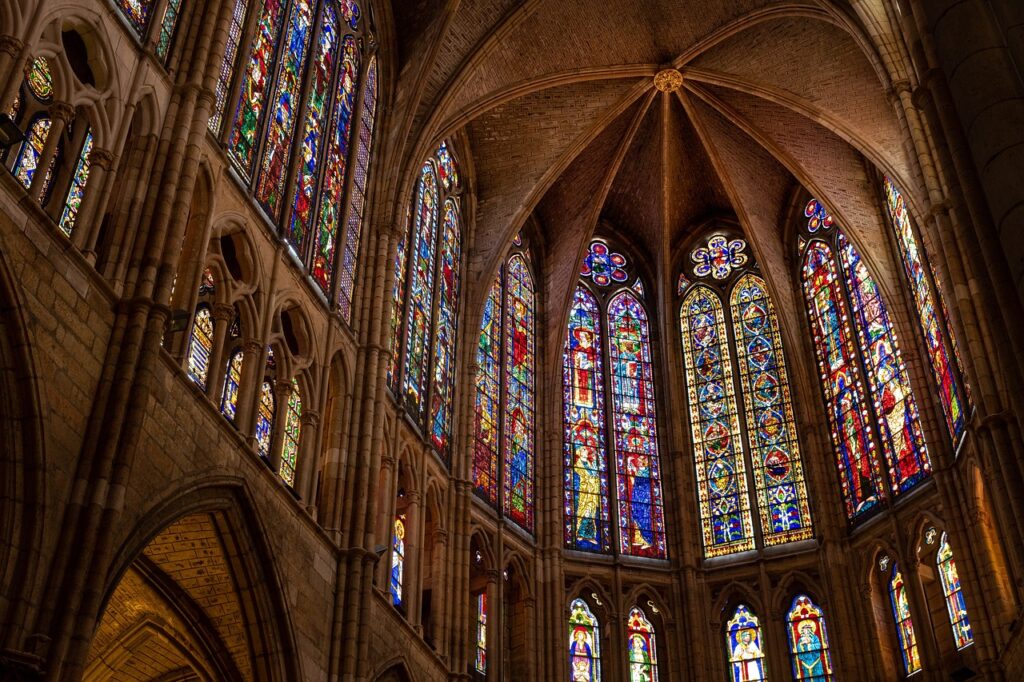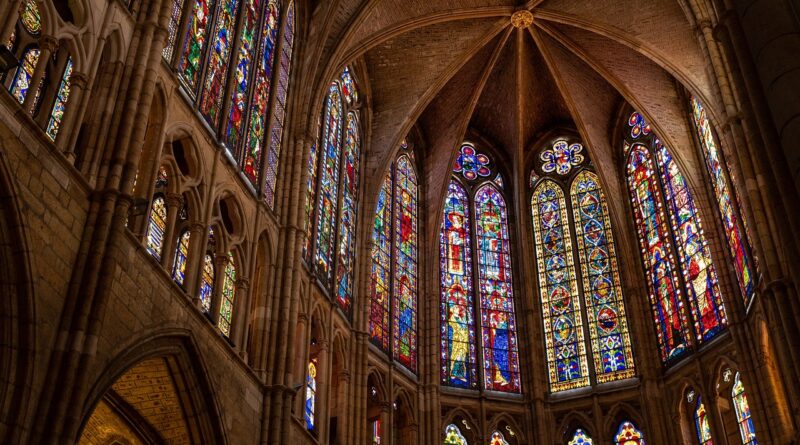Architectural Styles: From Gothic To Art Deco
Are you fascinated by the grandeur and beauty of architectural styles? From the soaring spires of Gothic cathedrals to the sleek lines of Art Deco skyscrapers, the history of architecture is a rich tapestry of creative expression.
In this article, we will explore the evolution of architectural styles from Gothic to Art Deco, highlighting the key characteristics and features that define each era.
As you journey through the history of architecture, you will discover the intricate details and ornate designs of Baroque buildings, the timeless elegance of Renaissance palaces, and the sleek minimalism of Modernist structures.
Whether you are a student of architecture, a history buff, or simply a lover of beautiful buildings, this article is sure to inspire and delight.
So come along on a journey through time and discover the fascinating world of architectural styles, from the Gothic cathedrals of the Middle Ages to the Art Deco masterpieces of the 20th century.
Gothic Architecture: Characteristics and Key Features
So, you’re interested in Gothic architecture? Well, let me tell you about its key features and defining characteristics.
Gothic architecture was first introduced in the 12th century and experienced a revival in the 19th century, known as Gothic Revival. The style is known for its pointed arches, ribbed vaults, and flying buttresses which were used to support the weight of the walls and allowed for taller and more elaborate structures.
One of the key features of Gothic architecture is its use of light. The walls were often decorated with intricate stained glass windows that allowed natural light to filter through, creating a mystical and atmospheric interior.
Another defining characteristic is the Neo Gothic reinterpretation, which saw the style reimagined in a more modern context during the 19th century Gothic Revival. This led to the creation of famous structures such as the Palace of Westminster in London and the Sainte-Chapelle in Paris, which showcase the grandeur and beauty of the Gothic style.
Renaissance Architecture: A Return to Classicism
You can almost feel the grandeur and magnificence of Renaissance architecture, with its revival of classical elements and emphasis on proportion and symmetry. The movement was a rebirth of sorts, as architects looked to ancient influences and techniques to create buildings that were both beautiful and functional.
Classical revival was at the heart of Renaissance architecture, with columns, arches, and domes taking center stage. Buildings were designed to be symmetrical, with a sense of harmony and balance that was meant to evoke a sense of order and stability.
This was a stark contrast to the Gothic architecture that came before, which was characterized by its pointed arches and ornate decoration. The Renaissance represented a return to the simpler, more elegant designs of the past, and its influence can still be seen in buildings all over the world today.
Baroque Architecture: Ornate and Dramatic
The Baroque architecture style is characterized by its ornate and dramatic features, with lavish decorations and elaborate designs that evoke a sense of grandeur and extravagance. This style emerged in the 17th century and was popularized in Europe during the Counter-Reformation, where it was used to convey the power and influence of the Catholic Church.
The style spread rapidly across Europe and eventually made its way to the Americas, where it was adapted to local tastes. Ornate details and dramatic flourishes are the hallmarks of Baroque architecture, with curved lines, bold colors, and intricate sculptures.
The style was often used for churches, palaces, and public buildings, where it was meant to impress and awe visitors. Today, Baroque architecture is still admired for its historical significance, but it has also been reinterpreted in modern times, with architects drawing inspiration from its ornate details and using them in new and innovative ways.
Whether seen in its original form or in modern interpretations, Baroque architecture continues to captivate and inspire.
Modernism and the International Style
Modernism and the International Style revolutionized architecture in the 20th century, with sleek lines, minimalist designs, and a focus on function over form. This style emerged in the early 1900s and gained popularity after World War I.

It was characterized by the use of modern materials such as steel, concrete, and glass, which allowed for new forms and shapes to be created. The International Style rejected ornamentation and embraced simplicity, clean lines, and a sense of openness.
One of the most prominent features of the International Style is minimalist design. This means that buildings were stripped down to their essential elements and were designed with functionality in mind. The use of straight lines, flat surfaces, and monochromatic color schemes were common.
Another prominent feature was Brutalist architecture, which emerged in the 1950s and was characterized by the use of raw concrete. This style was often associated with government buildings and universities, and its bold, imposing structures were meant to convey a sense of strength and stability.
Art Deco: A Celebration of Glamour and Sophistication
With its bold geometric shapes and luxurious materials, Art Deco transports you back to the Gatsby-inspired opulence of the 1920s and 1930s.
This architectural style was characterized by its use of symmetry, clean lines, and the incorporation of geometric patterns, such as zigzags, chevrons, and sunbursts. Art Deco was influenced by various art movements, including cubism, futurism, and constructivism, resulting in a unique and distinct style that exuded glamour and sophistication.
Art Deco was popularized in the early 20th century and was often used in the design of hotels, cinemas, and public buildings. The style was also used in the design of household items, such as furniture, lamps, and clocks, bringing a touch of elegance to everyday life.
Although Art Deco fell out of favor by the 1940s, its influence can still be seen in contemporary design. Its bold lines and use of geometric shapes continue to inspire architects and designers today, proving that the glamour and sophistication of Art Deco will never go out of style.
Frequently Asked Questions
What was the impact of Gothic architecture on religious beliefs during the Middle Ages?
During the Middle Ages, Gothic architecture had a profound impact on religious beliefs. Its towering spires and intricate details engendered a sense of awe and reverence, reinforcing the importance of the church in society. The cultural significance of Gothic architecture cannot be overstated.
How did the Renaissance influence the development of architecture outside of Europe?
You may be surprised to learn that the Renaissance influences on architecture extended beyond Europe. Non-European architecture was also impacted by this movement, with elements such as symmetry and proportion being incorporated into designs.
What factors were responsible for the decline of Baroque architecture in the 18th century?
Factors such as cultural and religious beliefs played a role in the decline of Baroque architecture in the 18th century. The shift towards Gothic styles and a rejection of the ornate Baroque aesthetic also contributed to its decline.
How did the Industrial Revolution play a role in the emergence of Modernism and the International Style?
You can attribute the emergence of modernist architecture to the Industrial Revolution. The new technologies and materials used during this period inspired architects to create sleek, functional designs that showcased the beauty of industry.
What are some notable examples of Art Deco architecture outside of the United States and Europe?
You’ll be surprised to know that Art Deco architecture in Asia and Latin America is just as impressive as in the US and Europe. Tokyo’s Asahi Beer Hall and Buenos Aires’ Kavanagh Building are notable examples.
Conclusion
Congratulations! You’ve just taken a whirlwind tour of some of the most iconic architectural styles in history.
From the soaring arches and intricate details of Gothic architecture to the bold curves and dramatic flourishes of Art Deco, each style has its own unique charm and character.
Whether you’re a history buff, an art lover, or simply someone who appreciates the beauty of the built environment, there’s no denying the enduring appeal of these styles.
So the next time you find yourself gazing up at a towering cathedral or marveling at the sleek lines of a skyscraper, take a moment to reflect on the rich history and artistry that went into creating these masterpieces.
And who knows – perhaps you’ll even be inspired to incorporate some of these timeless elements into your own home or office design.
After all, the beauty of great architecture is that it can serve as both a source of inspiration and a practical solution to our most pressing needs.
Happy exploring!

